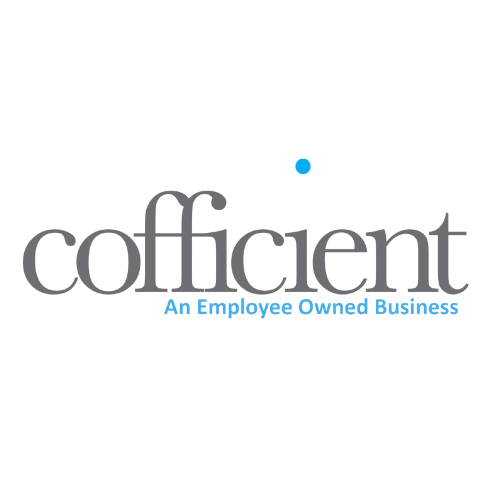
10 Pain Points Which Indicate You Need New Business Software
10 Tell Tale Signs You Need to Get New Software
Software is a bit different from other office purchases isn’t it? You know when you need to update your PC (hint: if it takes you more time to get it booted up in the morning than it takes to make your coffee, you might want to replace it). Your printer tells you when you need to replace the toner. You can tell when you’re running low on coffee (*sigh*). But let’s face it, no alarm bell sounds and no warning light flashes when you need to replace your software. Yet, it’s likely to be one of the most important purchases in your business. You use your software to run your whole business for goodness sake! So here is a handy guide of 10 pain points which indicate you might need new business software.
1) You are not getting meaningful information
Maybe you want to know how often your best-selling widget sells on a Saturday. But the system only tells you how many collective widgets you sell on a Saturday. Or maybe it tells you how many of your best-selling widgets are sold per month but you can’t drill down further. Your software should be able to slice and dice your business metrics in multiple ways, easily and with the click of your mouse. Ideally this should happen in real time. If you sell 10 more widgets since you last ran the report, you should be able to refresh and get the additional 10 widgets in your live report.
2) You don’t trust the BI you have
If I had a pound for each time someone has said “Sage does it, but not very well”, I would be a rich person. That sentence usually follows questions like “How do you manage your inventory?” or “How do you know customer profitability?” If you can’t trust your business intelligence, you can’t make good decisions about your business direction.
A friend of mine used to sell several products. Over the course of a month she would record time spent on each product on a spreadsheet. The FD of her business would pivot the spreadsheet to work out which product took the least effort to sell. The results were startling. According to the FD, my friend ought to have been constantly selling her least popular and least lucrative product. Why? Because, in isolation, it appeared to take less time to sell than anything else. In reality, the product was just niche and there were just fewer people to sell it to. Poor business intelligence does not lead to good decision making.
3) You are still using lagging measurements in your board pack
Do you find yourself reviewing the monthly figures, for the first time, in your board meeting? They might come as a complete shock. Who knew we were going to lose so much revenue from this time last YTD?! You might spend the next hour or two talking about how to mitigate the results. I used to write commentary for a board report. It took me four days to complete the narrative. This is mostly because I had no access to the figures until finance had closed off the month and sent me the details. I was supposed to comment on something I hadn’t seen hitherto. It took me four days to rationalise what I was looking at and deliver a plan for achieving better growth the following month. With cloud based software, all your key performance indicators are visible real time. Everything you need to discuss in your board meeting should be rendering live on your dashboard, hour by hour, day by day, throughout the month. This doesn’t just mitigate nasty surprises in the board meeting; it also gives you the opportunity to act on bad results immediately – before things get worse. New software will help you make better decisions and potentially avoid disasters.
4) It takes ages to understand your BI
In a previous life, the finance team would email me tables stuffed full with data; ostensibly “4% up; 2% down” type stuff. Accompanying the table would be a note saying, “why are we 4% up?”. Good question. Let me turn to Cognos and run a report on the yield. Nope, nothing there. Let me open up this alternative spreadsheet. Nope not in there. Maybe this software can help, if I cross reference it with that….. you get the idea. I had to lock myself in a dark room for days to analyse all the information required of me.
You need new software.
There are tools out there which allow you to view all your essential boardroom KPIs on your dashboard. Cloud based technology allows you to render the information live so you are never working from lagging measurements; only leading ones.
5) You are duplicating or triplicating effort
You sales guys sell something. The order gets booked into the CRM system. Then the CRM order book is printed off and taken into the finance team so they can spend more time plugging it all back into Sage for invoicing.
You need new software.
6) You still use disparate solutions
Your sales guys sell something. The order gets booked into the CRM system. Then the CRM order book is printed off and taken into the finance team so they can spend more time plugging it all back into Sage for invoicing. Similarly, your finance guys are chasing payment for said orders. Some of the customers are multiple days overdue. Your sales people don’t know this and continue booking sales from late payers and non-payers. The sales team are putting effort into customers you should be avoiding. The finance team are spending even more effort chasing payment. All the while, your cash flow is impacted.
You need new software.
A system which mirrors real life and links front and back office (ERP) gives your staff access to all the information they really need to do their job. They don’t work in isolation from each other. They are intrinsically linked. So why isn’t your software?
7) Your systems don’t integrate tightly.
So maybe you’ve already recognised the above and you have gone to some effort to integrate your front and back office software. Great. You’re a step forward. But you’re probably still not where you need to be. A tight integration can work, for sure. But it’s hard to achieve with different software models and vendors. Systems crashing, taking ages to run and throwing error reports are all common when you have to integrate legacy software. It’s also pointless when you could, in fact, have spent your money on a single unified system in the first place.
8) You’re experiencing profit leakage
Take the above scenario; where your finance people are busy duplicating sales into the finance system. As soon as you introduce manual input you introduce the propensity for human error. Maybe something gets missed out, a customer isn’t billed; that’s a direct loss to the bottom line. It’s not just lost revenue but a loss in productivity if you take all the sales effort into account. You may also lose some respect from that client.
Here’s another scenario. Your sales people are only human, and they can’t remember every conversation they have had without the help of good sales productivity tools. Imagine a potential customer has agreed to make a decision about purchasing your product or service before the end of the week. Your sales person doesn’t have a good time management tool and forgets to make the call. The deal is lost.
New software.
9) Your system is prohibiting your growth
You can’t manufacture in quantities high enough to match demand, because your systems slow you down. You want to be able to expand into international markets but you need to buy multiple systems to match the complex tax requirements. You are considering hiring more people but you are not sure if you have are working as efficiently as possible. Your wastage is too high. Your profits are leaking. You can’t count your stock. Your customers don’t pay…… I could go on.
10) You hate your job
Everything is just so tiring, so time consuming and so down right painful. Before you update your CV/sell your business/ call in the liquidators….. consider if it’s just possible that you could overhaul your systems and start to run your business the way you always meant to.
It’s never too late. Get in touch if you’d like to speak to an expert!



